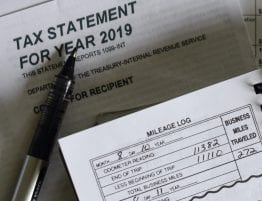Artists often have multiple income sources and usually, one of them is royalty. Royalties are considered earned income by the IRS and attract taxes the way ordinary income does. If you are an artist such as an author, musician, songwriter, or singer; your income from royalties is taxable. How much in taxes you need to pay on royalties depends upon your income tax bracket. However, any royalty earned over $10 needs to be reported on a return.
How to Report Royalties
Since an artist may earn royalties from multiple sources, they may lose track of how much they are earning and from which source. Form 1099-MISC makes that easy. Every company, individual or organization that pays you royalty needs to provide you with Form 1099-MISC, Miscellaneous Income. You receive Form 1099-MISC if you earned at least $10 in royalties or broker payments from that source. Also, if you earned at least $600 in prizes or awards, the company or individual that gave you the prize needs to provide you with Form 1099-MISC. Using this form, you may accurately know the amount in royalties you earned and from which sources.
Most artists are self-employed and report their earnings on Schedule C (Form 1040). If your total income as an artist (self-employed) is $400 or more, you need to report it on Schedule C and pay self-employment tax on your income. For reporting royalties, Schedule E (Form 1040), Supplemental Income and Loss is used.
A host of deductions are available to artists that they can use to lower their tax liability. Some of them include purchase of a computer for work, journal subscriptions related to work, educational courses related to your profession, uniform or specialised gear needed specially for work, and so on.
Under-reporting of Income
It is important to accurately determine income for tax purposes so as to avoid under-reporting of income. The IRS considers it a “substantial understatement of taxes” if a taxpayer understated his/her tax liability by 10% or $5,000, whichever is greater. The penalty charged for underpayment of taxes is called Accuracy-Related Penalty. Regardless of whether the underpayment happened due to negligence or disregard of tax rules, the IRS charges this penalty for under-reporting income.
The Accuracy-Related Penalty is 20% of the underpaid taxes in cases of negligence, disregard of tax rules, and substantial understatement of taxes. This means that the higher the amount of income that was not reported, the greater the penalty the taxpayer needs to pay.
Since the IRS also receives information about a taxpayer’s income from third parties, if they find a discrepancy in their estimate of your income and what you reported on your return, they send Notice of Under-reported Income—CP2000 in order to have you review the discrepancy and respond accordingly. Note that if there is an underpayment of taxes; along with penalty, the IRS also charges interest on the under-reported amount, which is calculated from the due date of filing to 30 days from the date of the notice. Extension to file that you may have obtained does not apply here. If the under-reported amount is not paid in full, interest continues to accrue on the amount owed.
Conclusion
Though artists earn income from a variety of sources that keep changing with new employers and projects, spending a little time in organizing your sources of income can ease the burden at tax time. It will help in keeping track of your 1099-MISC and you will also know the breakdown of your net earnings. Granted that artists are usually not interested in finances and taxation, you can make your tax journey simple by keeping excellent records and organizing.









